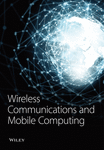A new approach for random key pre-distribution in large-scale wireless sensor networks
Abstract
In a wireless sensor network (WSN), pre-distribution of secret keys is possibly the most practical approach to protect network communications. To meet the stringent resource constraints of the sensor nodes, key pre-distribution schemes should be highly efficient, require as little storage space as possible, and at the same time, maintain a strong security strength, that is, high resilience against node capture. In this paper, a new approach for random key pre-distribution is proposed to achieve both efficiency and security goals. The novelty of this approach lies in that, instead of using a key pool consisting of random keys, a key generation technique is carefully designed such that a large number of random keys can be represented by a small number of key-generation keys. Then, instead of storing a big number of random keys, each sensor node stores a small number of key-generation keys while computing the shared secret keys during the bootstrapping phase on the fly using the computationally efficient hash function. The proposed scheme outperforms the previous random key pre-distribution schemes in that it reduces the storage requirement significantly while holding the comparable security strength, as shown by our thorough analysis and simulation. Copyright © 2006 John Wiley & Sons, Ltd.




